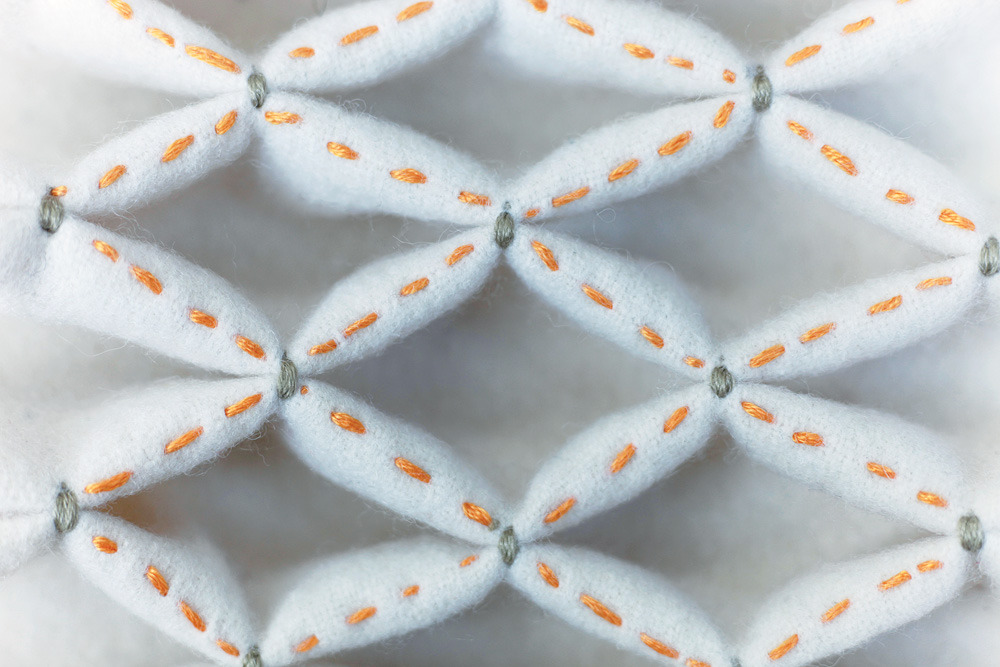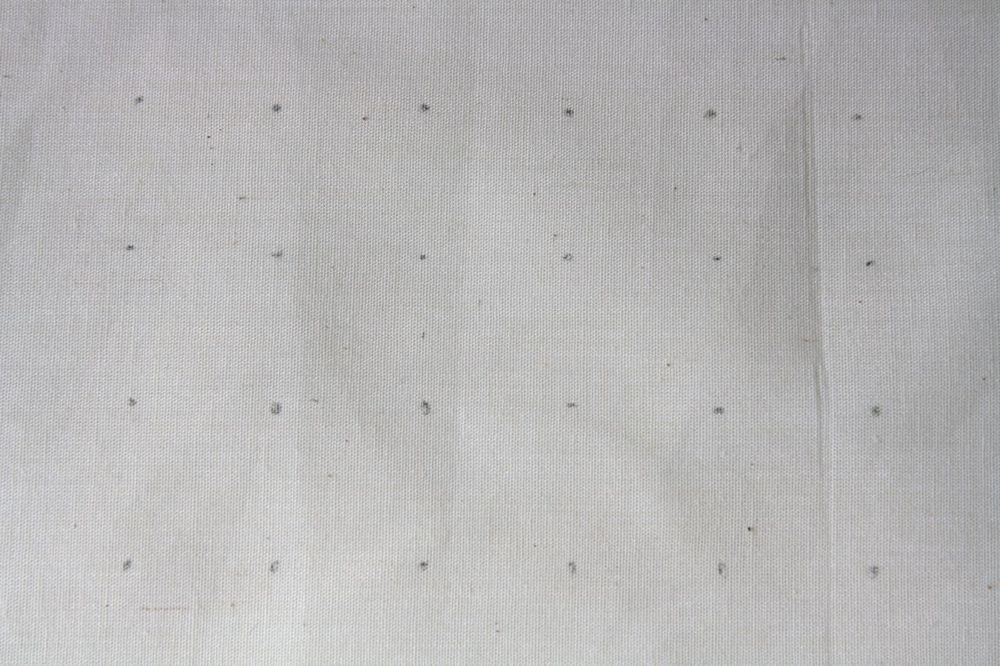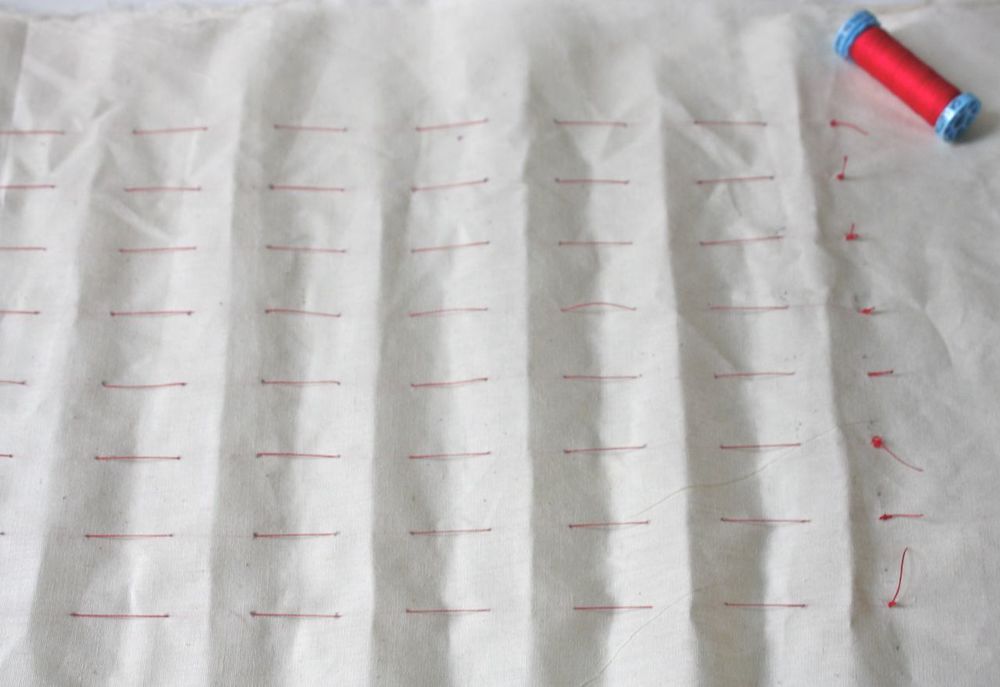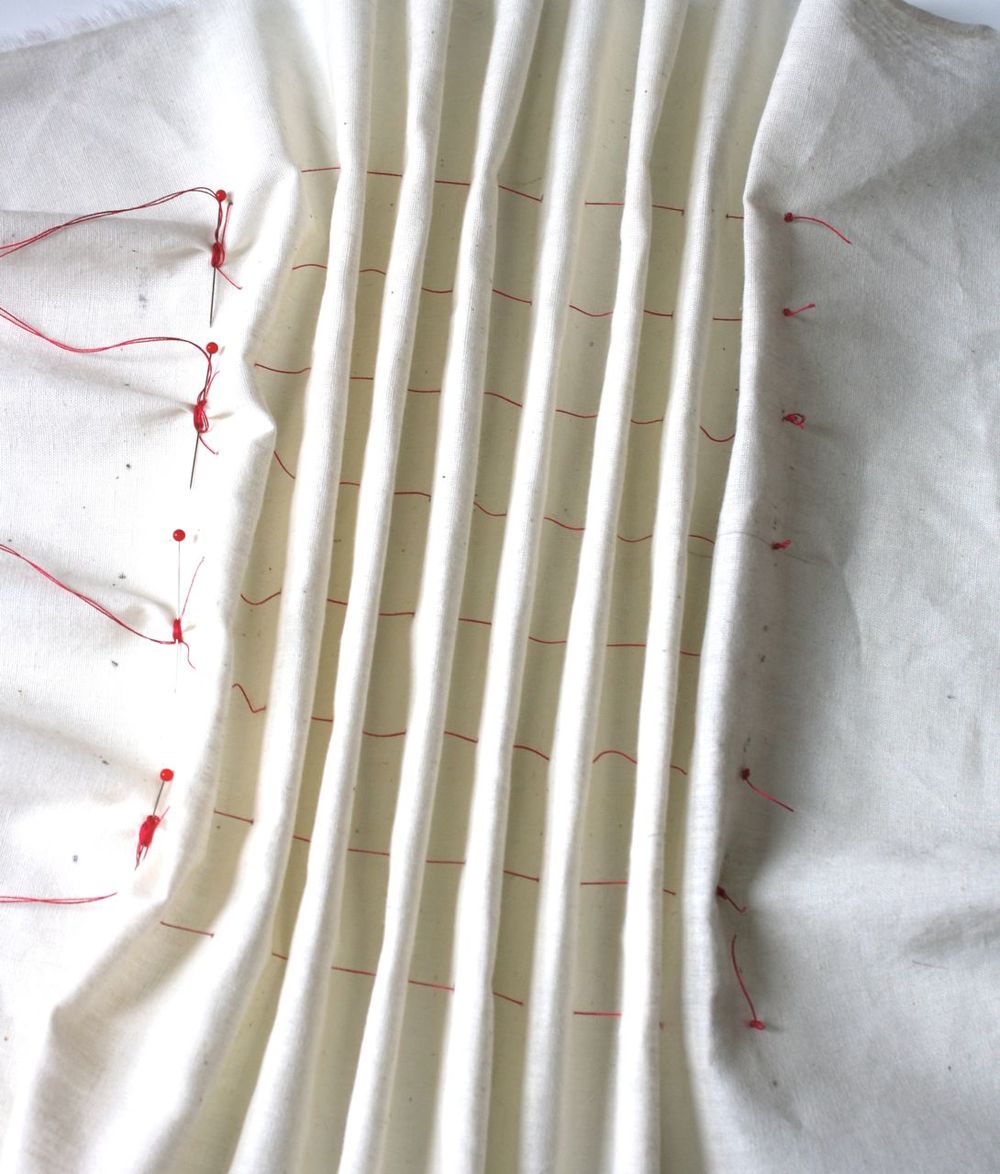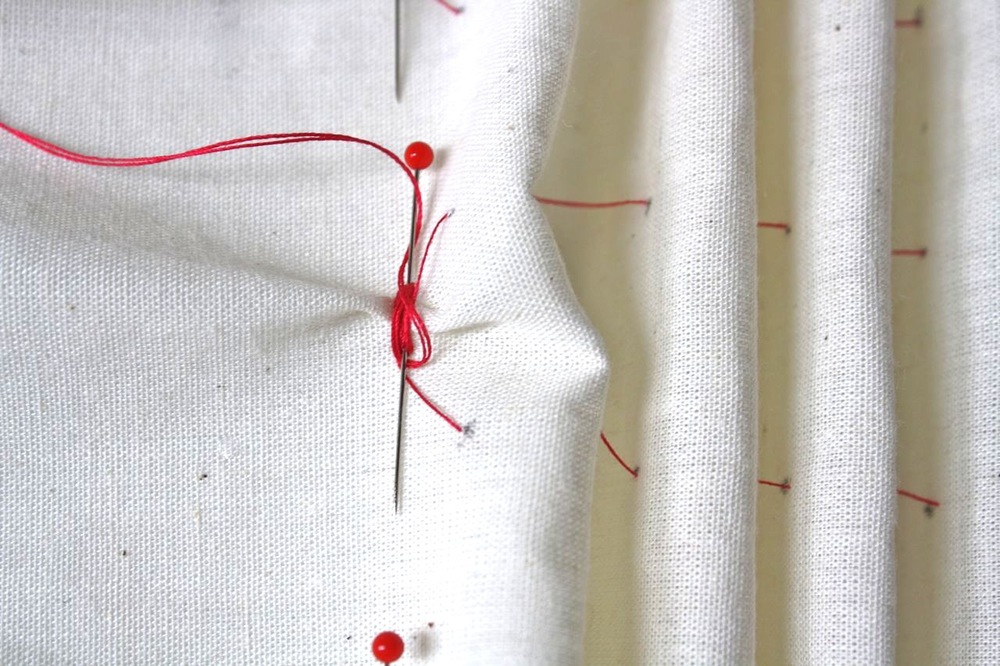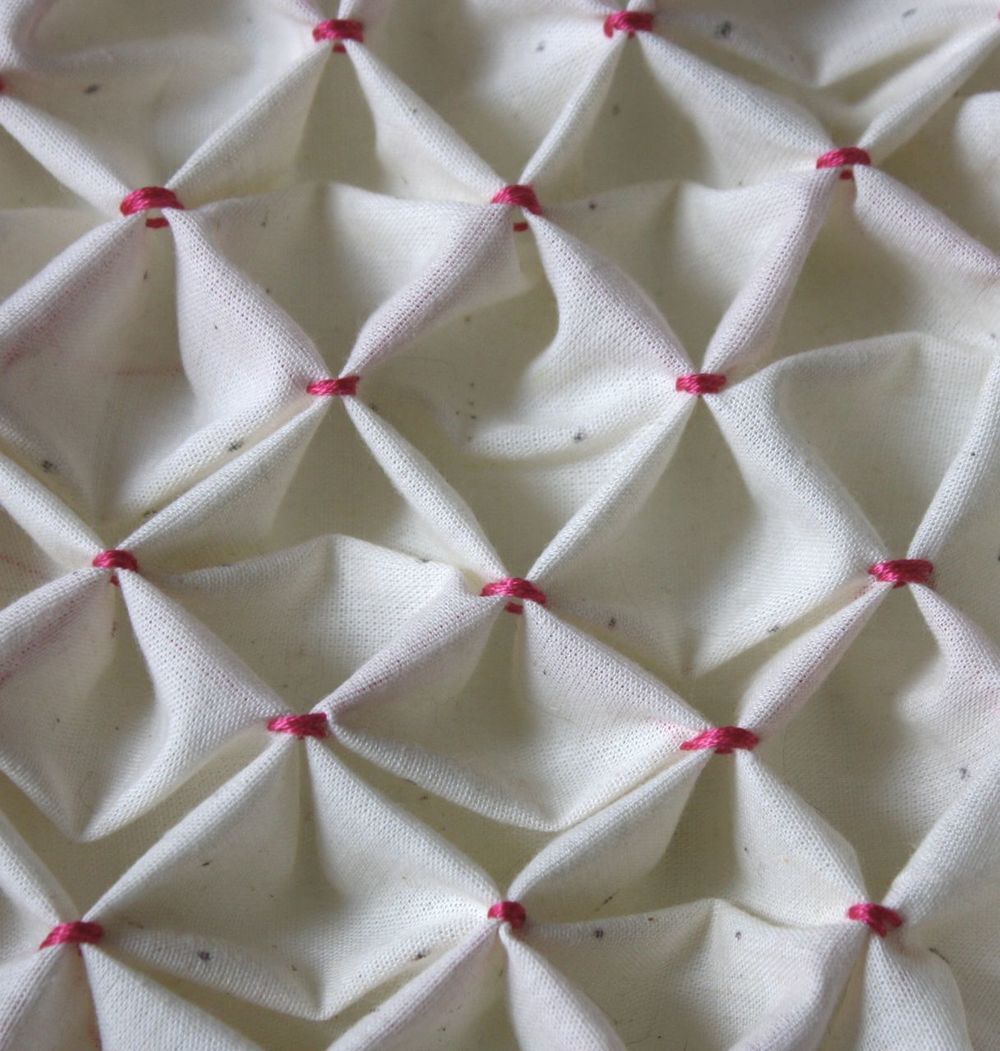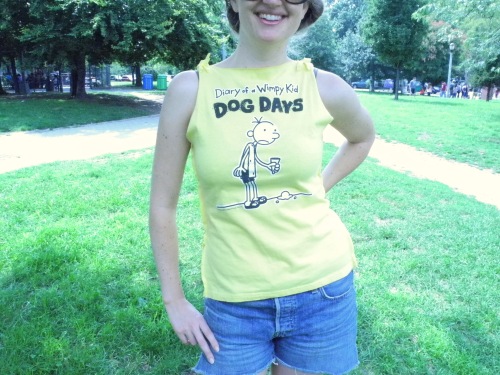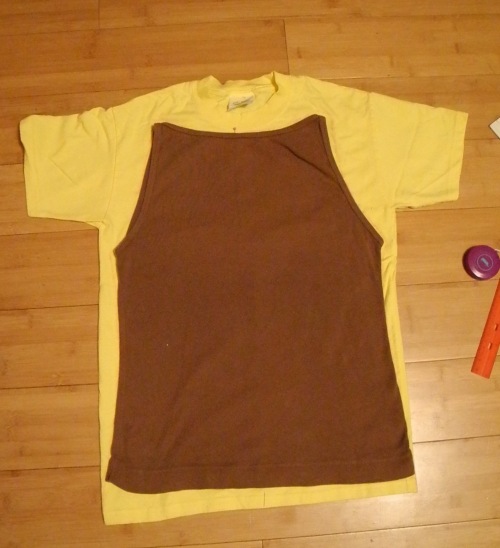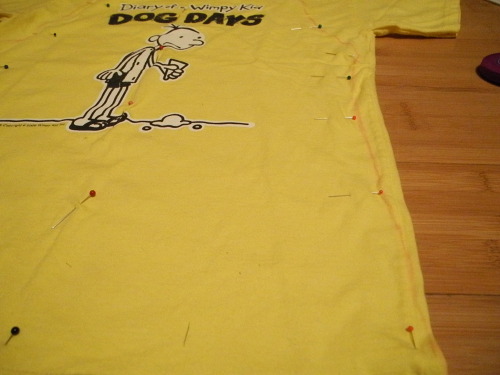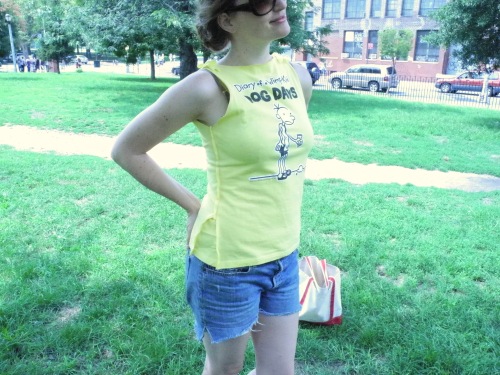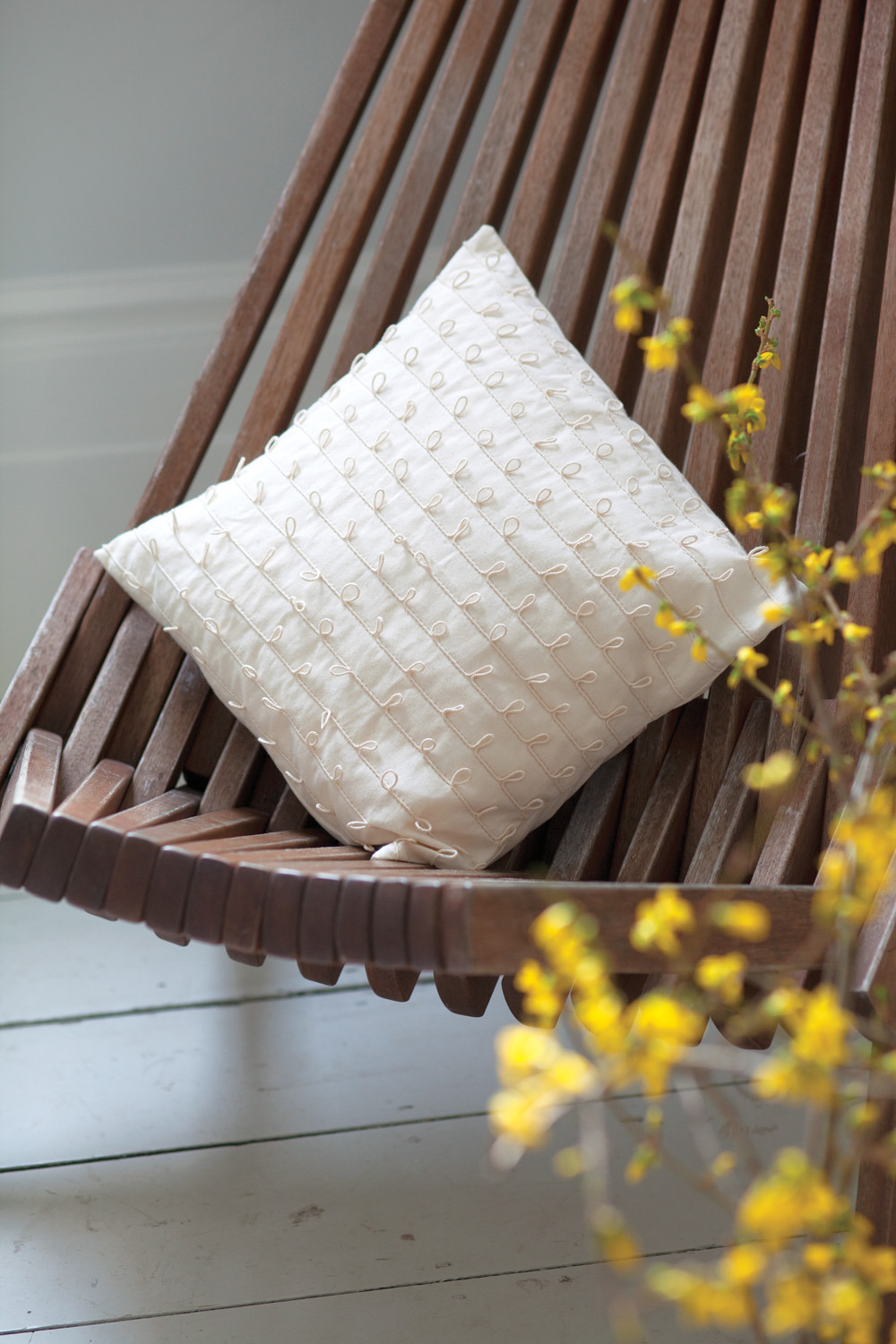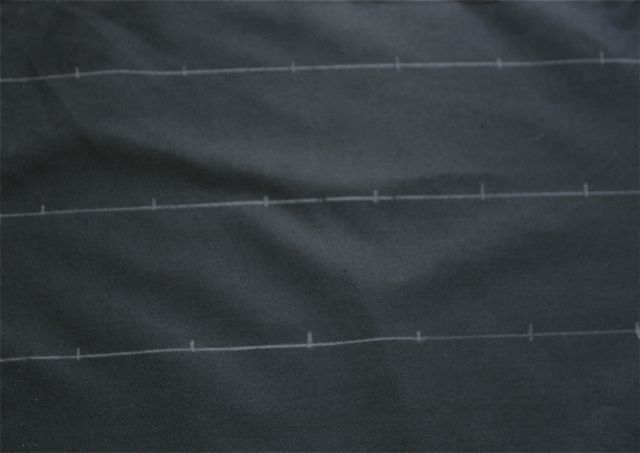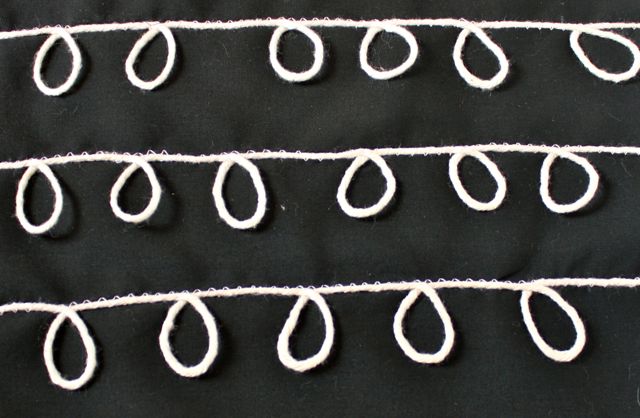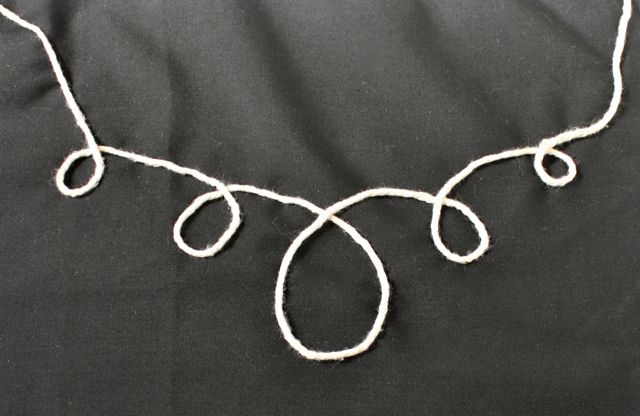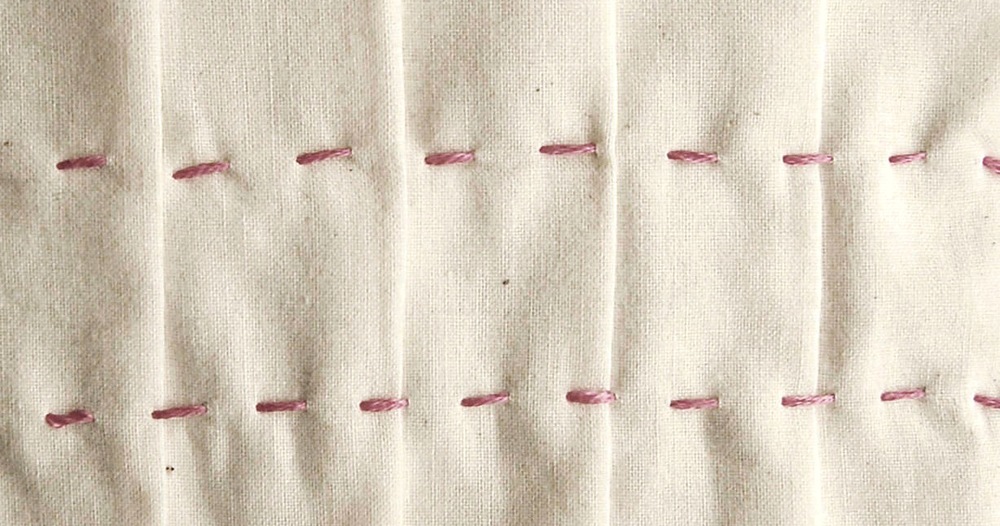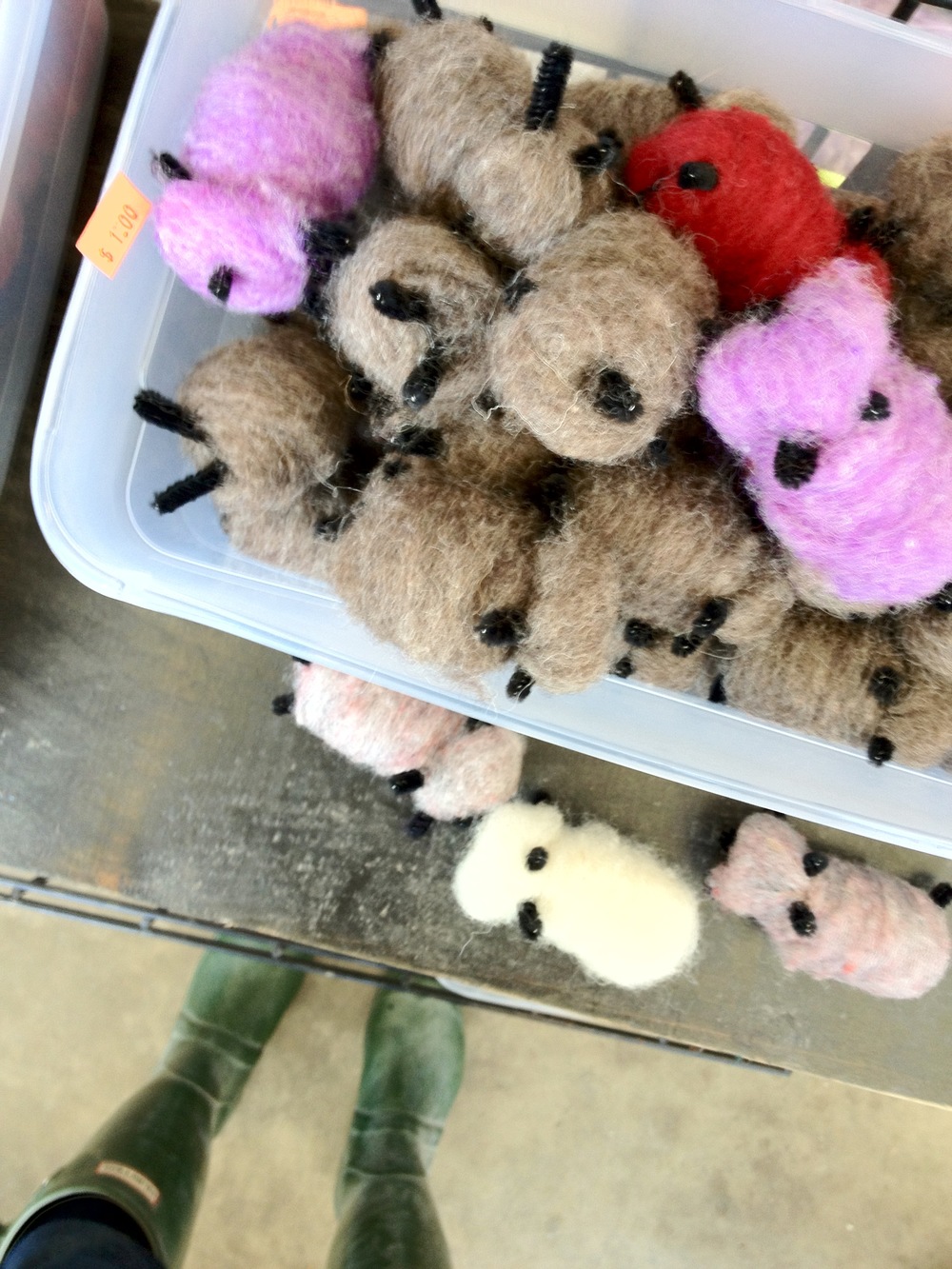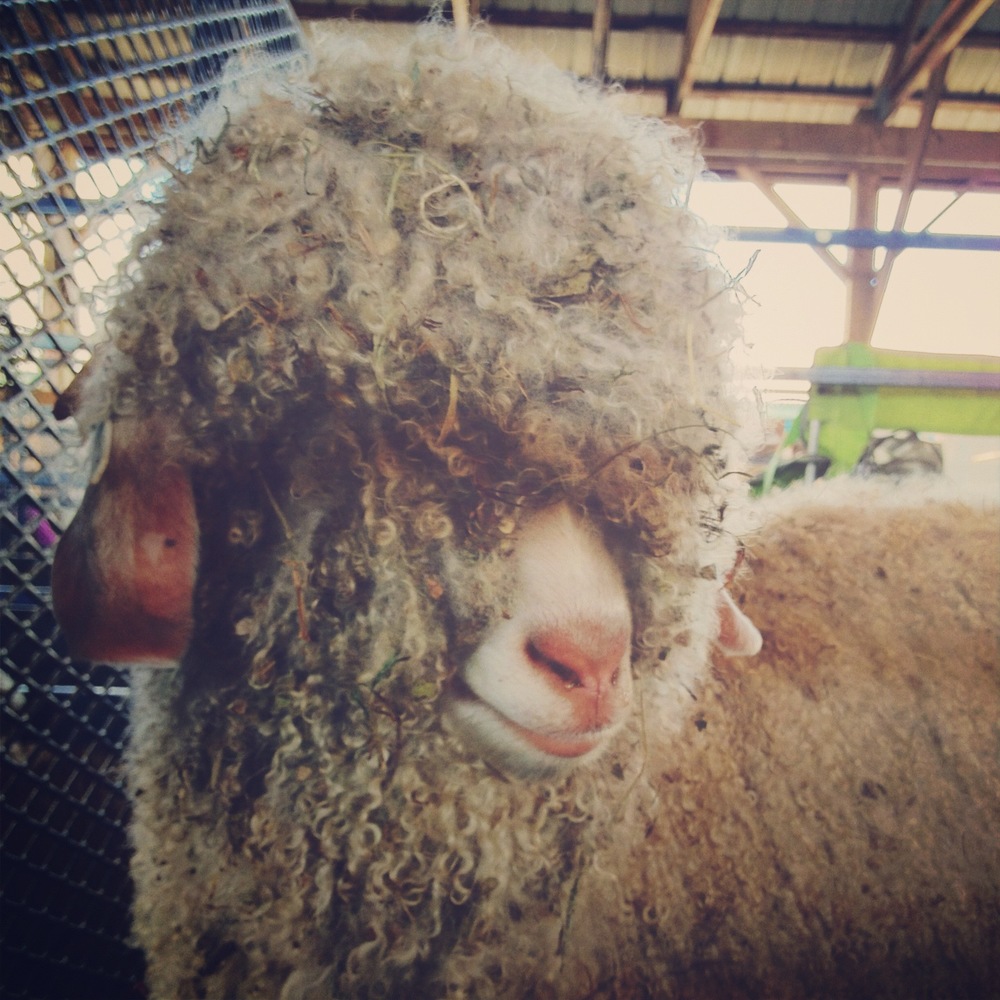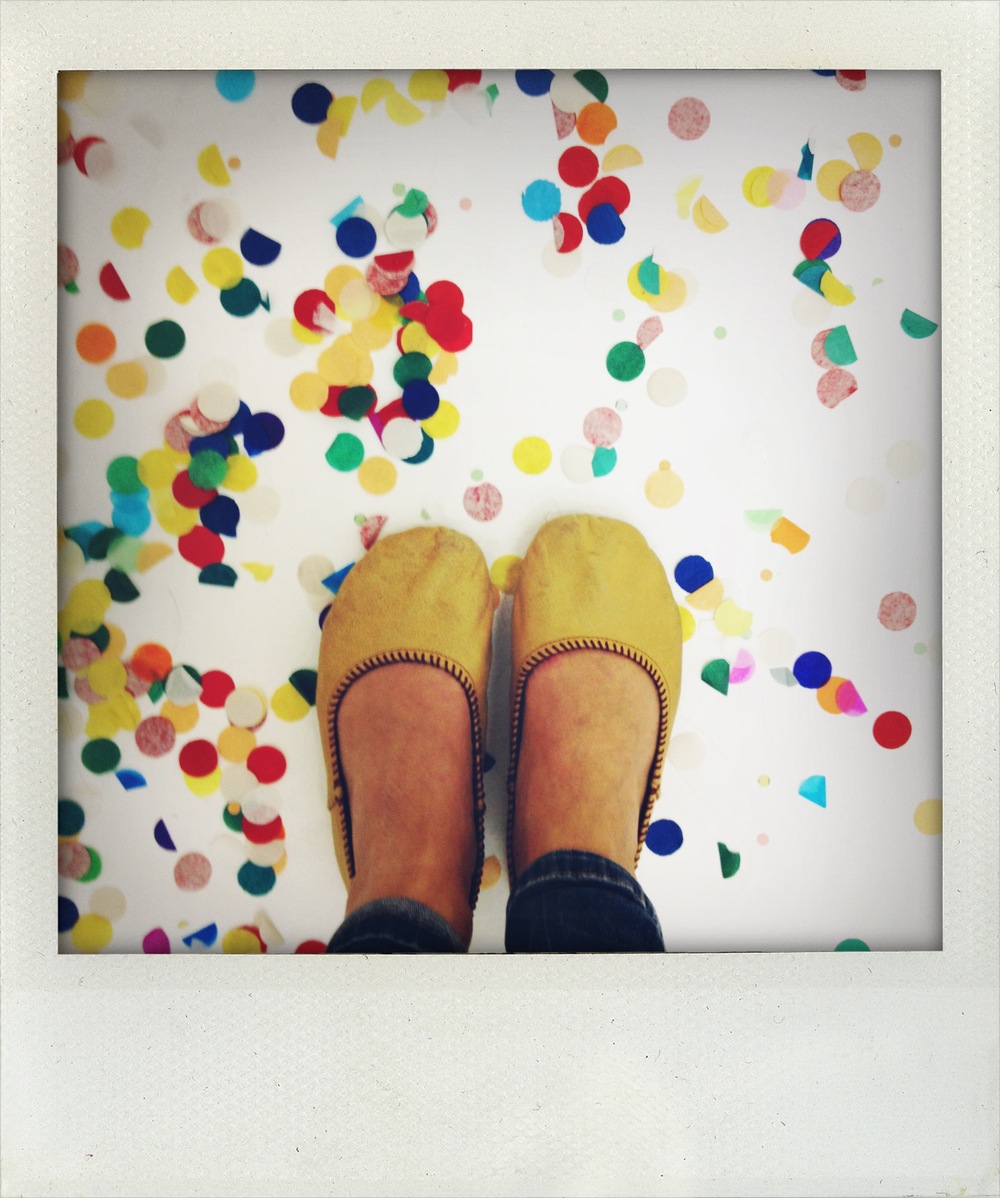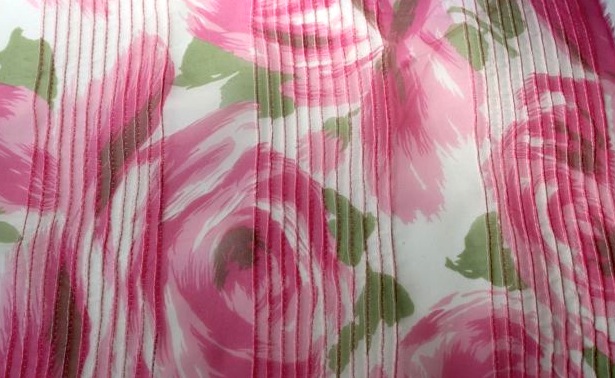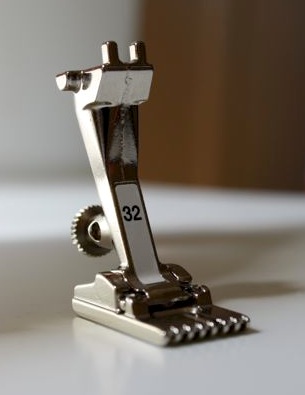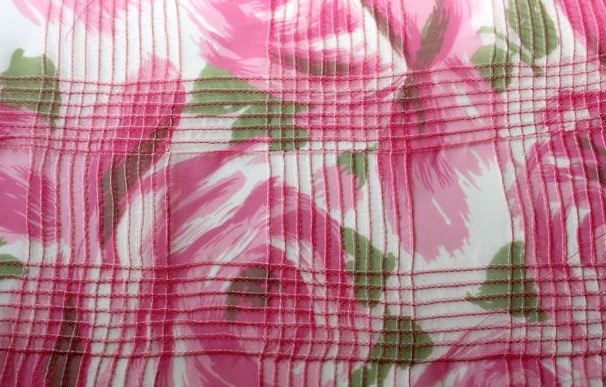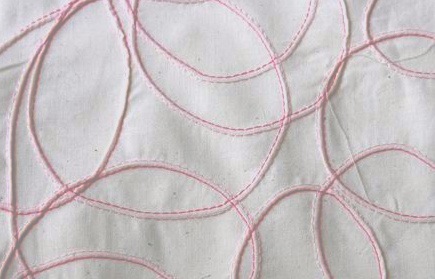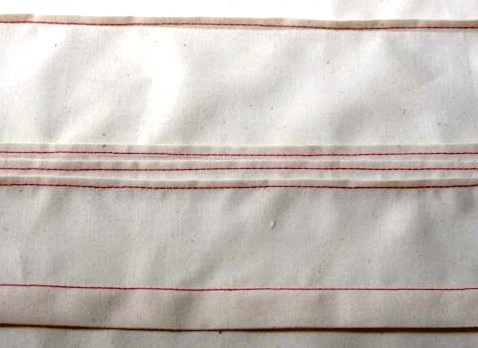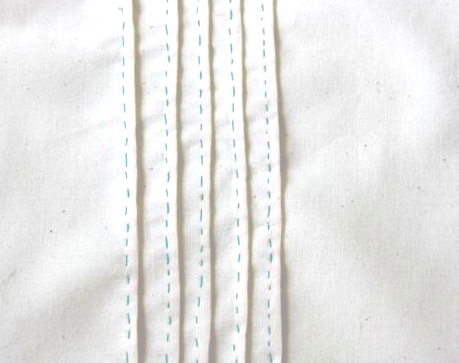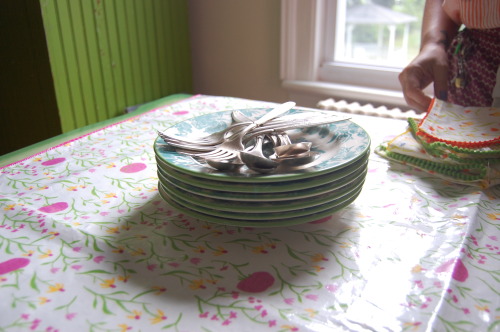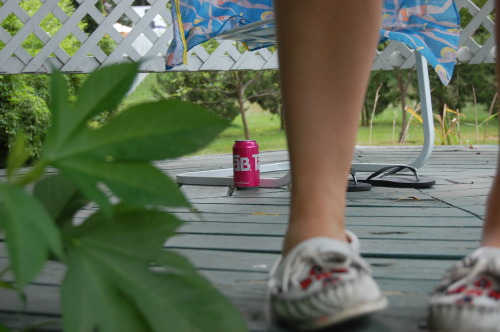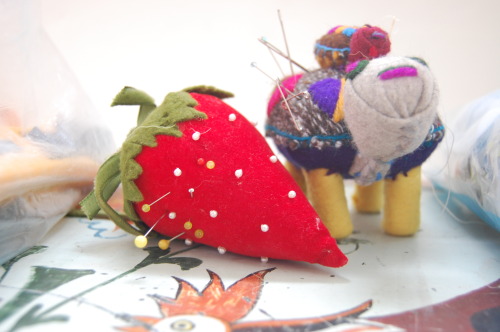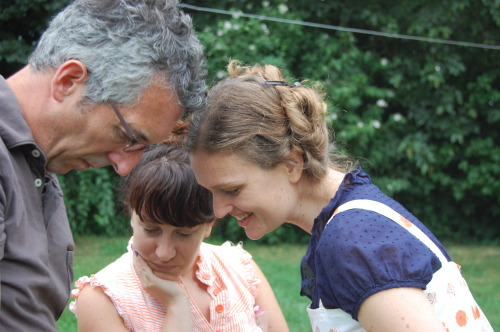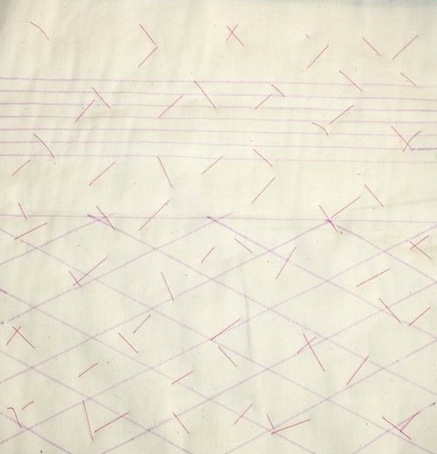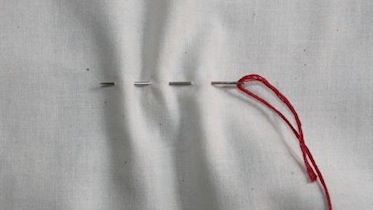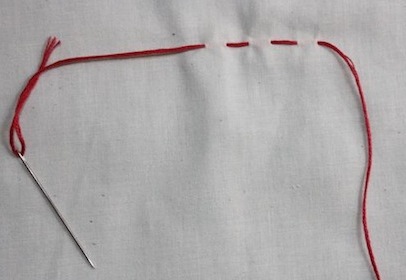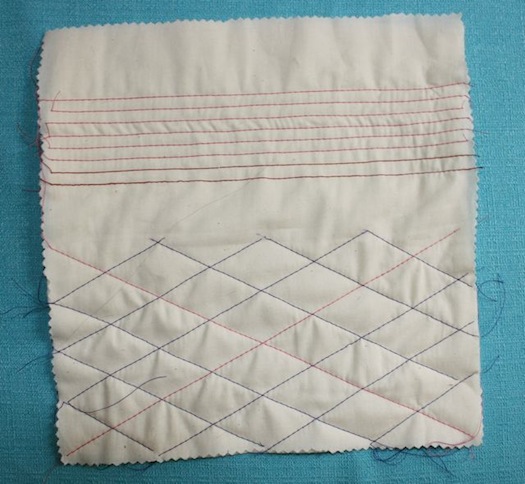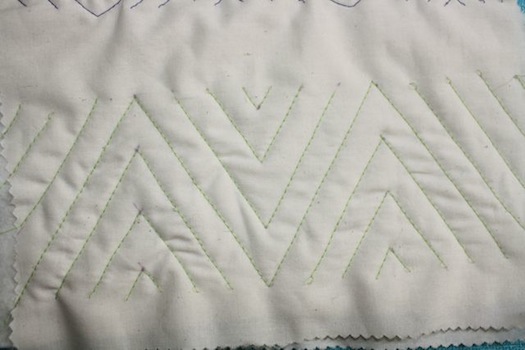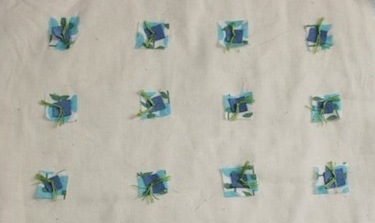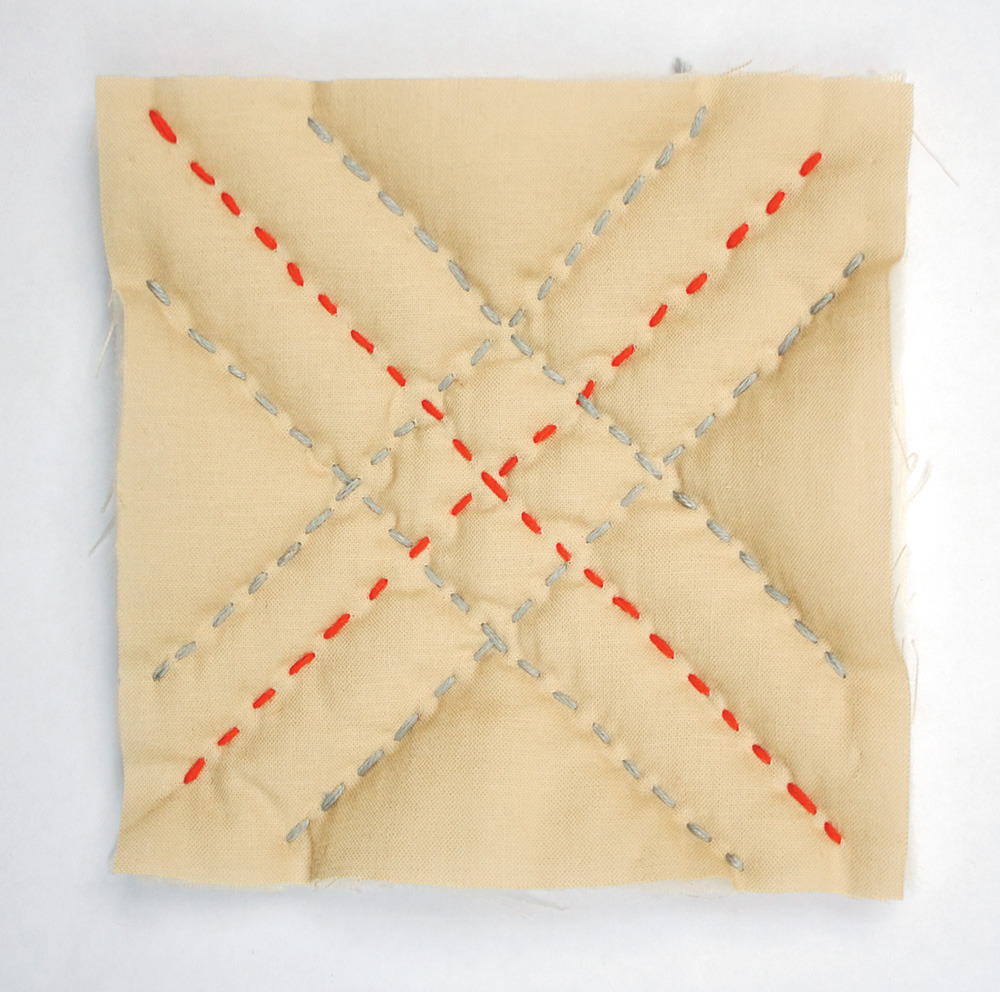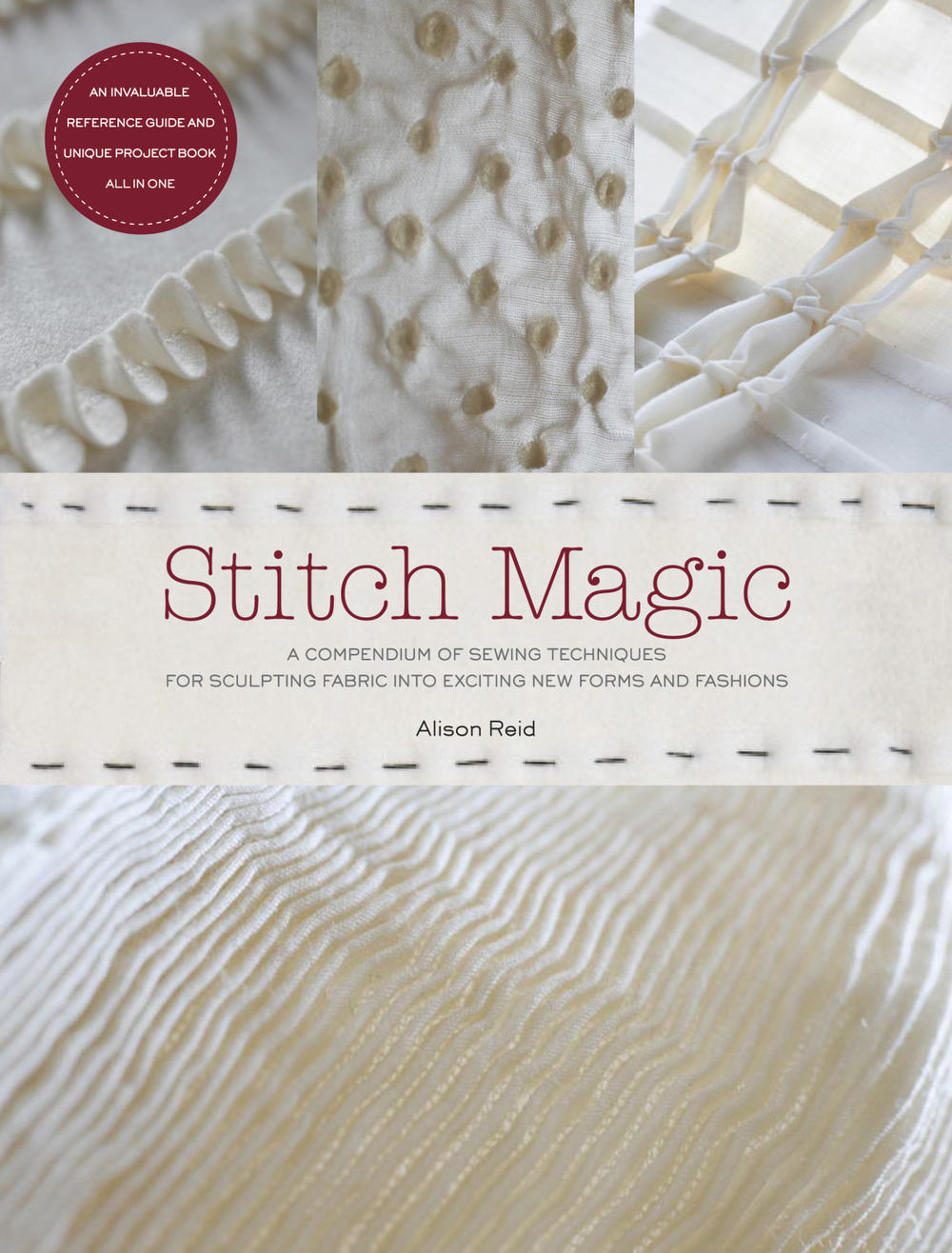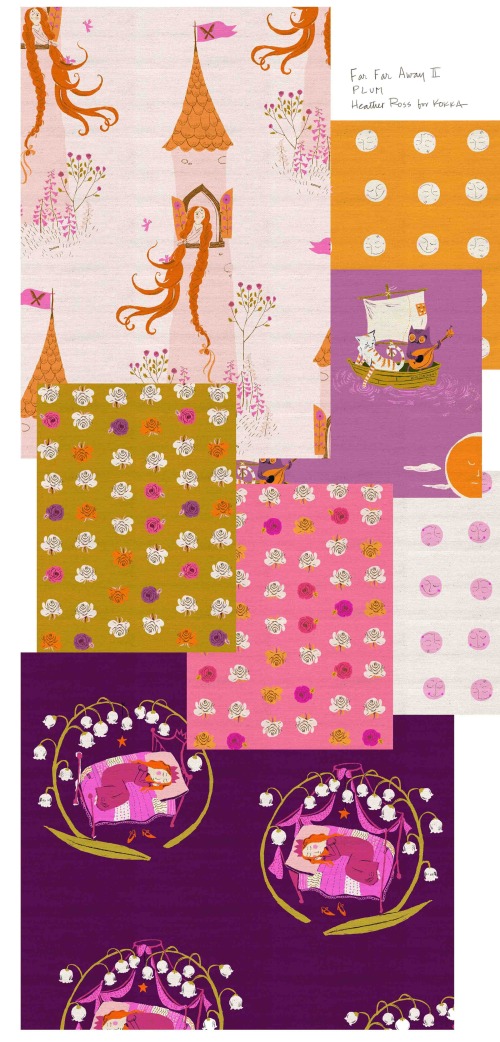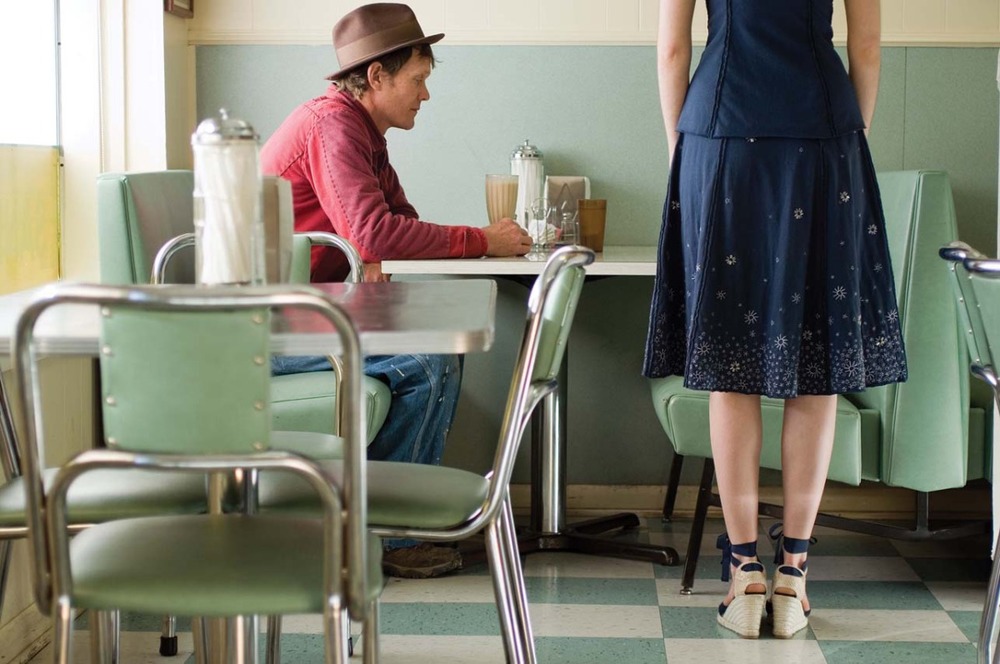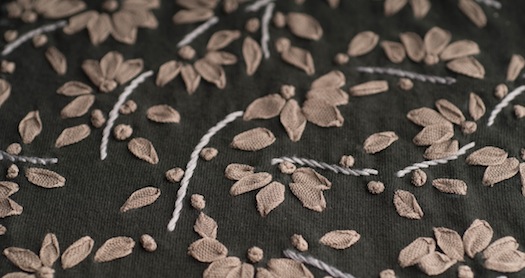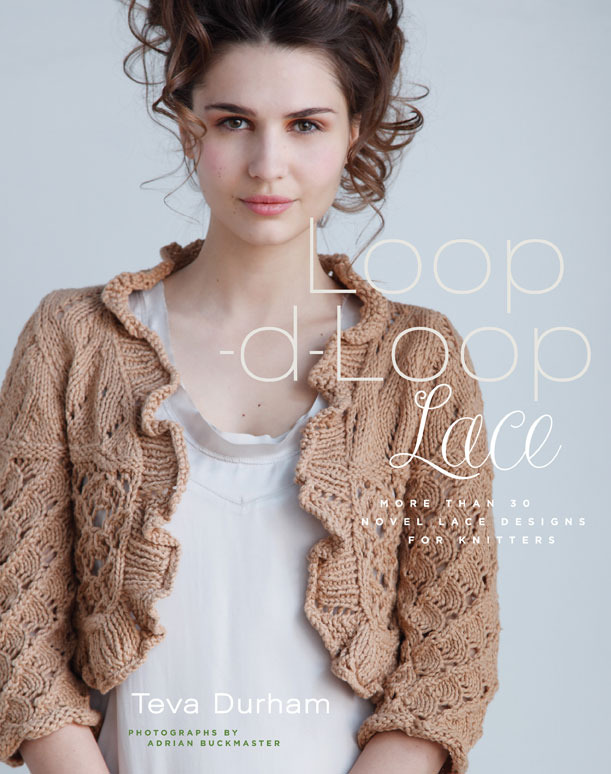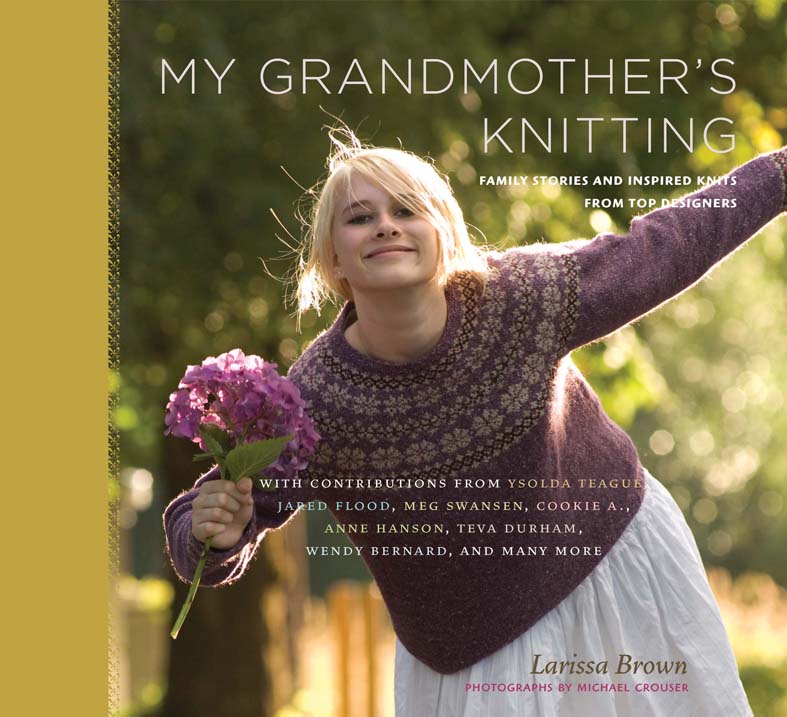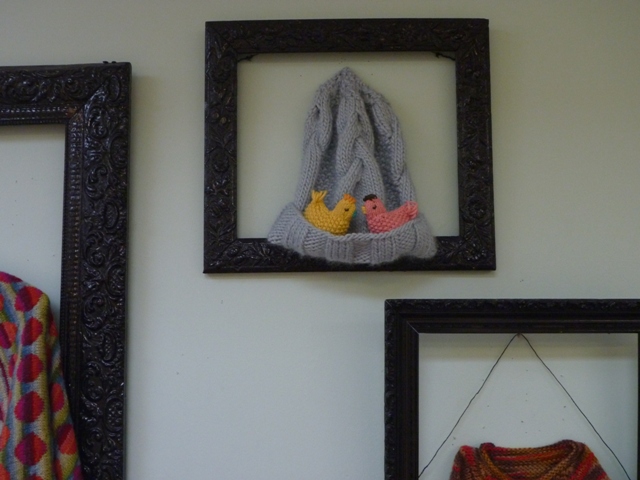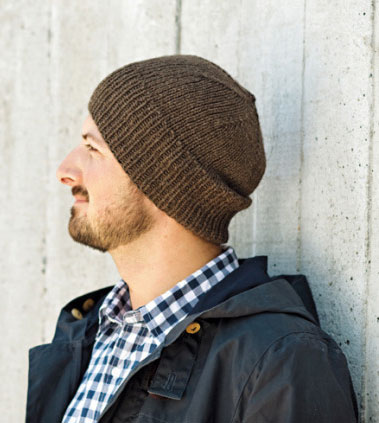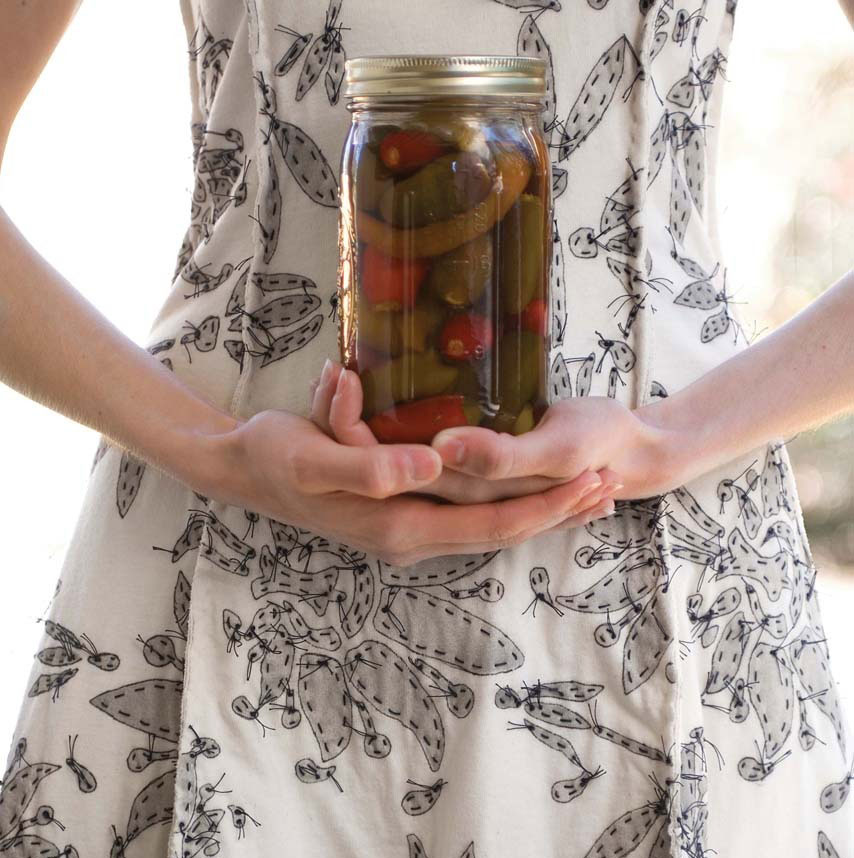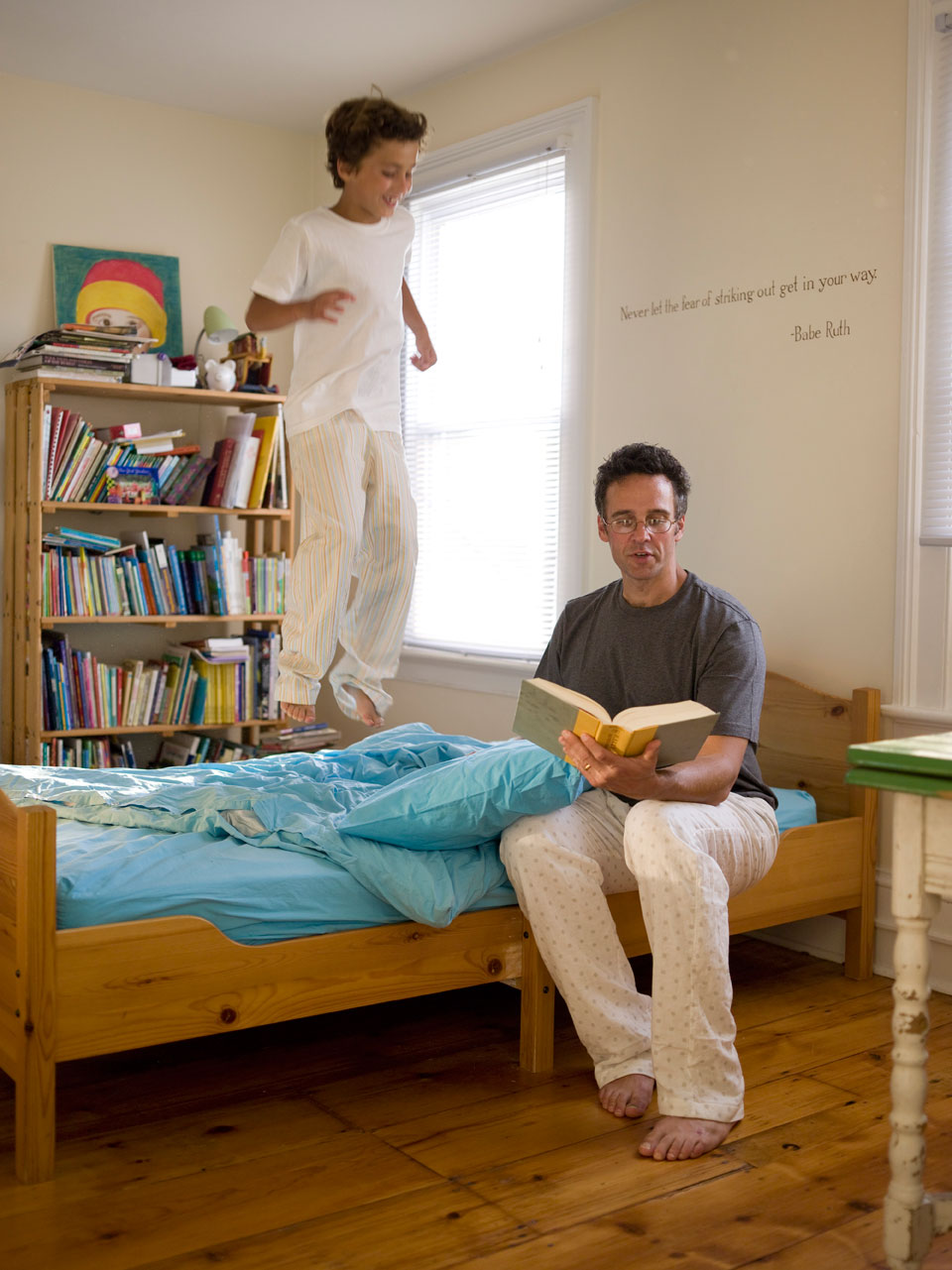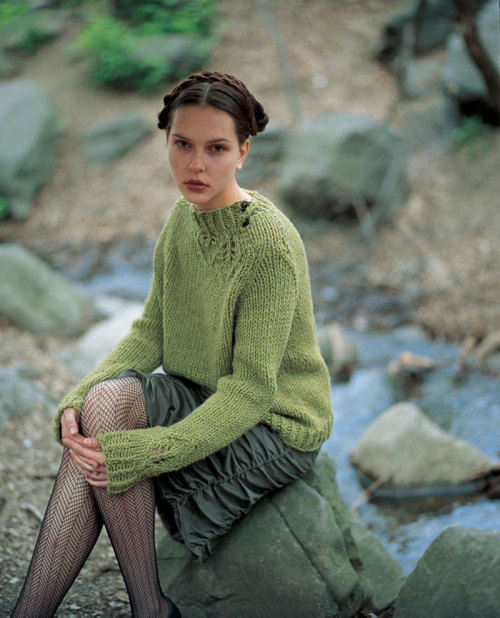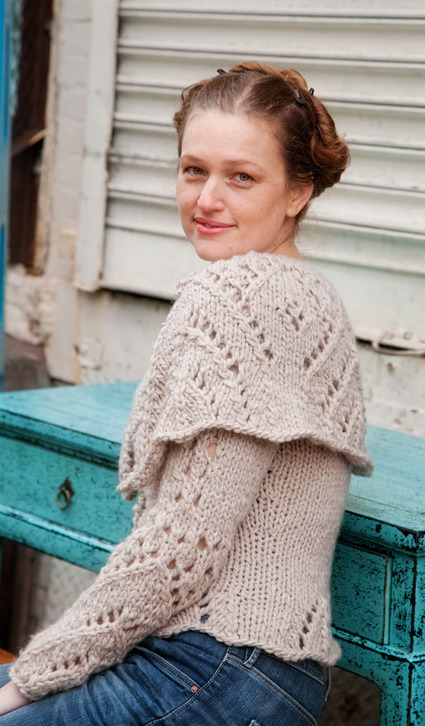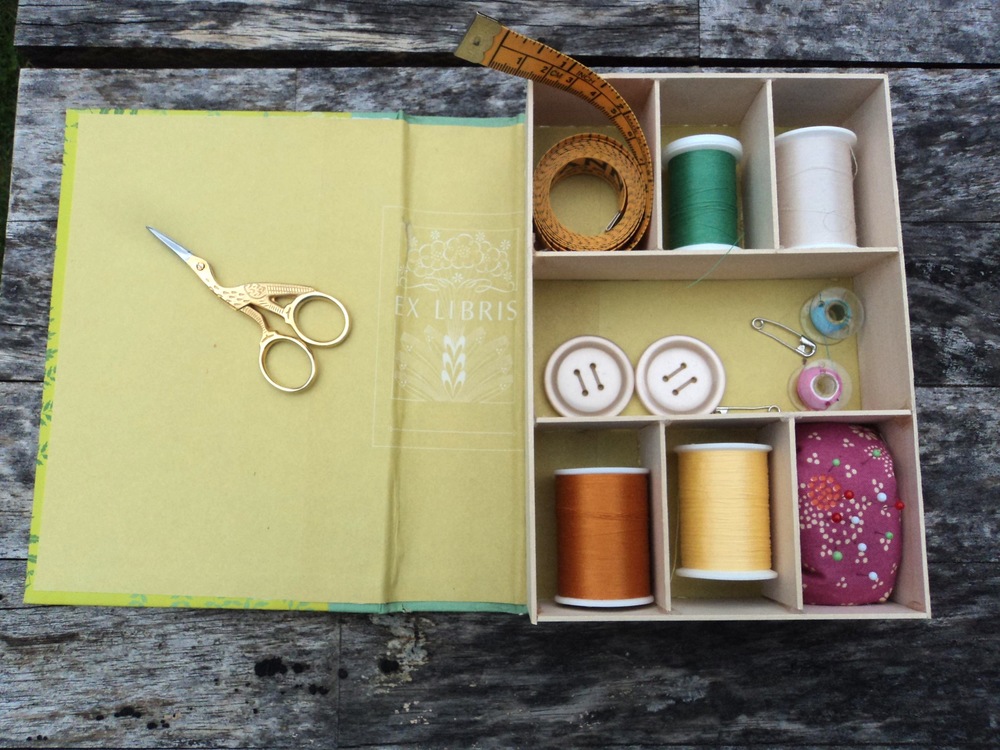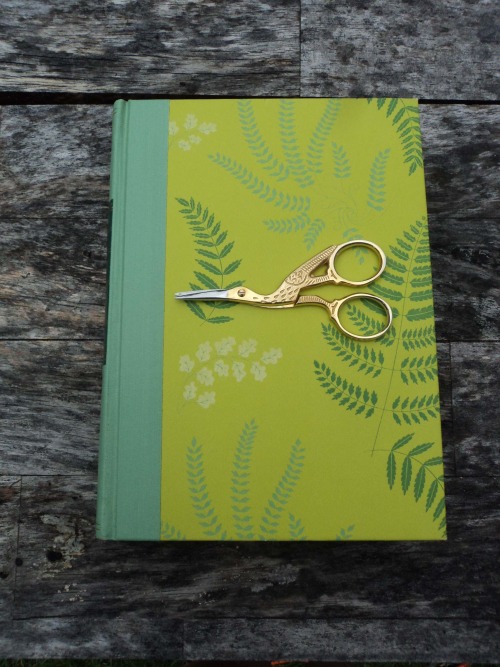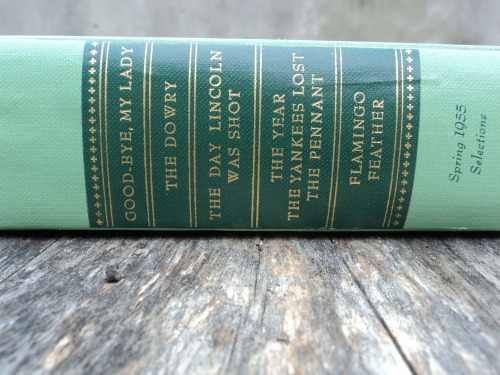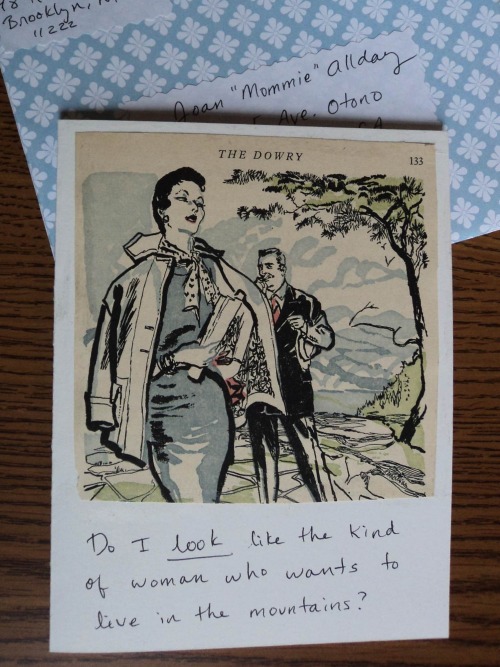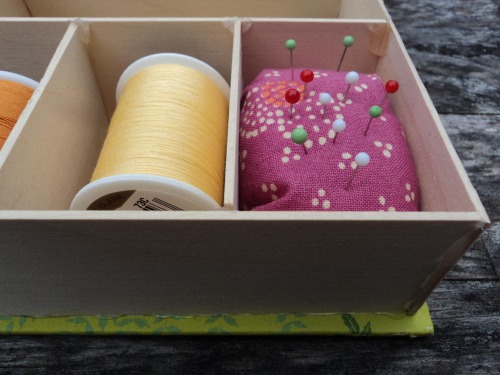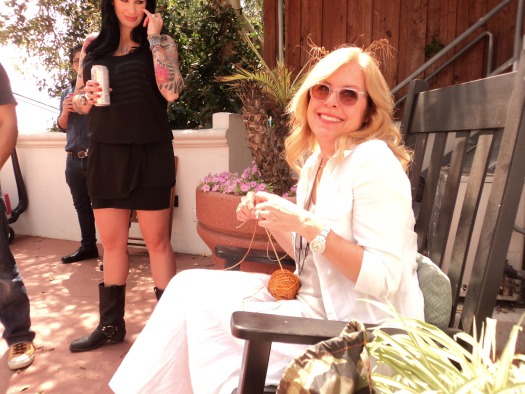
What you see when you look at a knitting book is the finished product: patterns that have been exhaustively reviewed; graphic design that has been overhauled nine times until every detail—from fonts and palettes to captions and dingbats—is exactly right; and beautiful photography, which is one of the most challenging (and important) aspects of the book-making process. Photography makes the first impression and sets the tone for the whole presentation. And that, of course, is why photo shoots can be so stressful—for the author, for the photographer and stylist, for the editor, for everyone. Everything you’ve been working on has built up to this moment, when every participant must tap into his or her most creative and fashionable resources, work together as a team, and record the garments in a matter of just a few days. And if you don’t get it right? Well, you either decide you can live with it or you find the time and resources to shoot it again. But the underlying tone of every photo shoot is this: Get it right.
So when it came time to photograph the garments for the third book in the Custom Knits series—a book that will be entirely devoted to accessories—I decided to fly out to Los Angeles and station myself on set. The role of the editor on a photo shoot is fairly straightforward: Make sure that the knits are being photographed from every important angle, make sure that the right side of the garment is facing front (really!), and regulate anything that may look silly in the end. Like shiny pants on men. Or a model wearing yoga pants and a luxurious bouffant up-do. But most importantly, an editor must do all of this while giving the creative people space to do their thing.
On the first day of our shoot, our lovely, talented, and hilarious author Wendy Bernard (see above) pulled out her needles and started working on a fingerless mitt. We had forgotten that we needed one more basic example of a glove type in the book, and so there she was, knitting a mitt that would be photographed the very next day. Red Dodge, our fabulous makeup and hair stylist, looked on with a sort of disbelieving amusement.
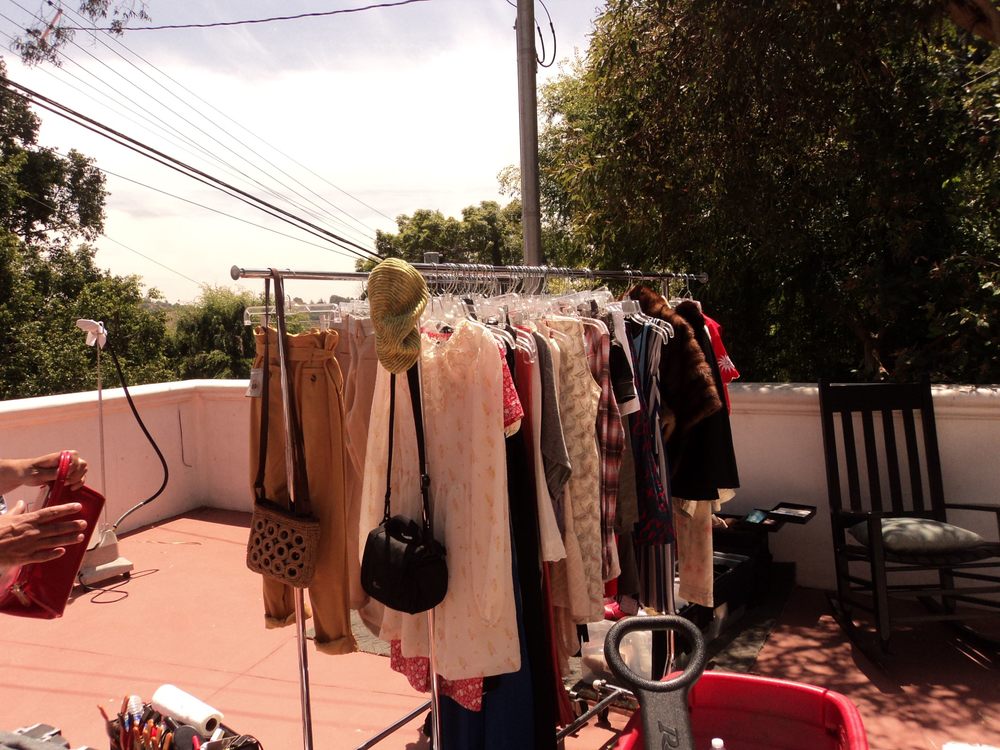
Our amazing stylist, Mark Auria, pulled out all the stops when it came to wardrobe. Mark stationed his racks of clothing—a mix of vintage dresses and lovely new items—on the porch at the house where we shot the first day, and between shots we would run to the garment racks and play with ideas, oohing, aahing, and vetoing until we found the perfect outfits for our darling models.
When you look at the final photos in a book, you’d never guess that there was a whole crew of people surrounding the model. Below are some of my behind-the-scenes shots: photo assistants holding reflectors, the stylist on hand to adjust the garment if it starts to go wonky, Wendy or I nearby to make sure the stitch pattern is showing, the makeup-and-hair whiz on hand to fix errant locks, and always someone in the background munching on a cookie, slurping a Coke, or fussing with a cell phone.
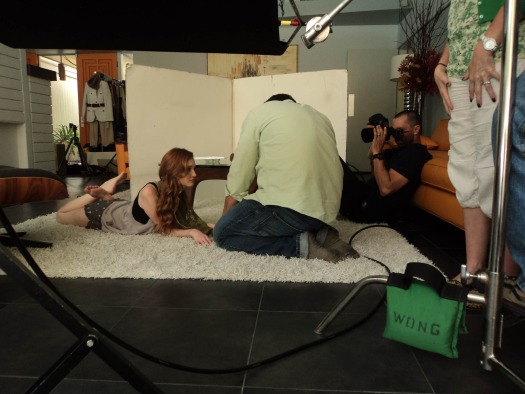
In the photo above, Mark, the stylist, adjusts the model’s scarf, as Joe Budd, our photographer, checks out light levels. 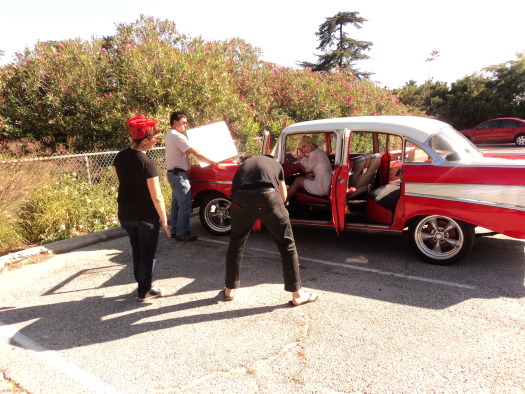
A group assembles around a 1950s Chevy (above) as the model drapes herself over the steering wheel for a coy beret shot.

After taking the photo of these legwarmers (above), we decided that the white wall behind her was too cold and bare. So we moved the whole set-up across the patio so that we could use a wall with a little brickwork.
One of the most memorable days of the shoot was in Marina del Rey, out on a sailboat. It wouldn’t be a Custom Knits book without models in bikinis wearing knits, right?
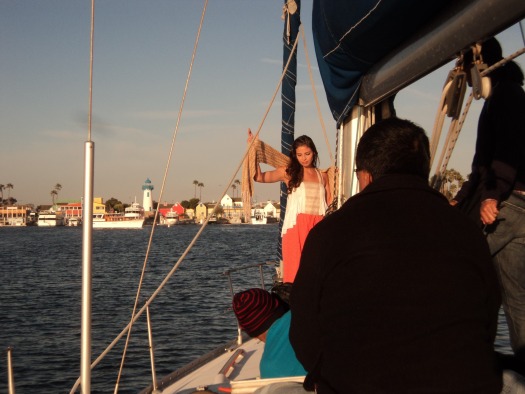
It was a chilly day by California standards, with lots of wind creating some mighty big waves. Our model was an absolute pro, so when you look at the photos, all you can see are her beautiful smile and Wendy's shawl in the golden glow of sunset—thankfully, you don't see her goose bumps or her trepidation about the boat tilting wildly from side to side.
Between shots, she wrapped herself up in a big, comfy sweatshirt and Joe, the photographer, showed her the photos so that they could talk about facial expressions and best angles before shooting the piece again.
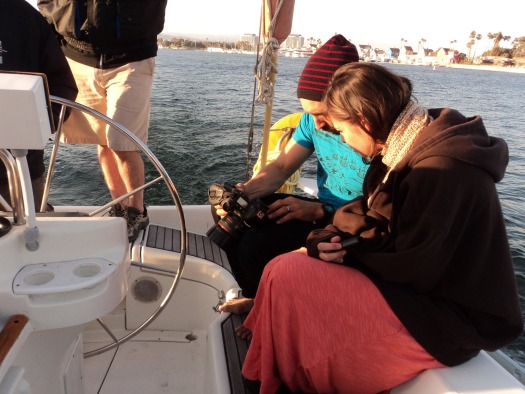
For the shot below, inspired by the cover of the May 2011 Anthropologie catalog, we went below deck. I love the dramatic way light is filtering through the shawl.

Once we set out to sea, we had quite the rollicking time. Amidst the huge waves, a bikini-clad model wearing a poncho hung onto the boat for dear life, and out of ten people on the boat, only three of them turned green during the ride. Oh, what we won’t do for a really great photo! And while I won’t share with you that particularly epic poncho shot just yet, I will share this photo of me and one of our male models (or M.P., a name we made up for the Custom Knits books which stands for “male prop”), laughing and laughing because we can’t believe how big the waves are and how much the boat is rocking.
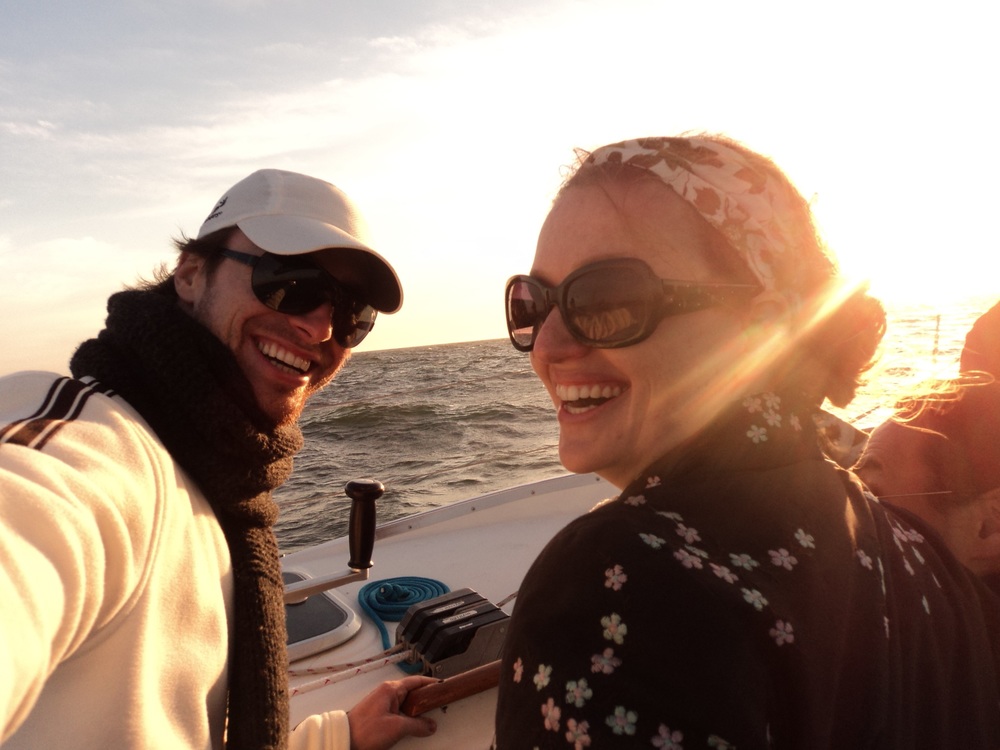
When it was all said and done, we couldn’t have been happier with our gorgeous shots. And we can’t wait to share them with you in a couple of seasons! In the meantime, keep your eye out for the next beautiful book in the series—Custom Knits 2!—which is due to hit bookstores this October.
